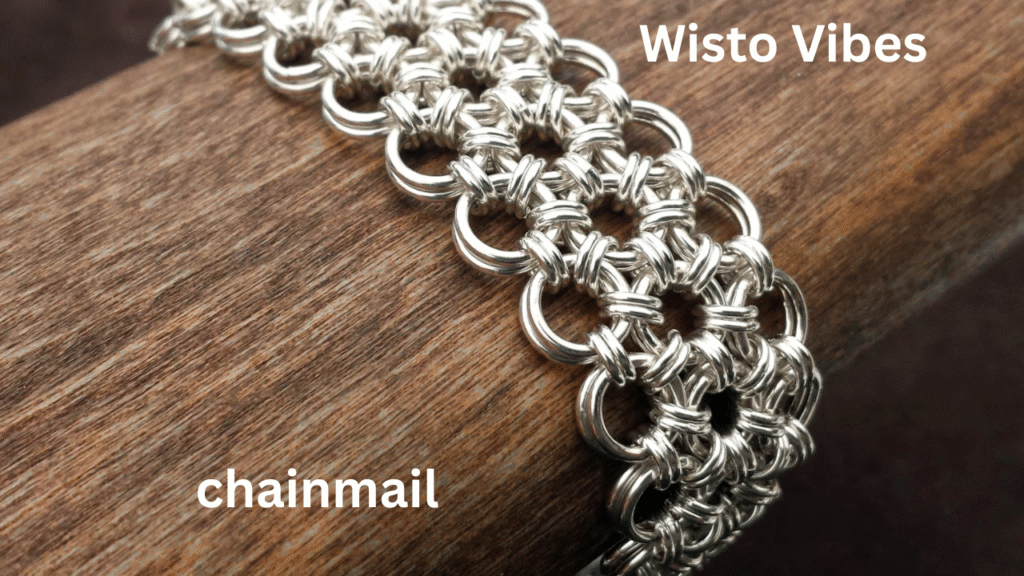Chainmail, sometimes written as “chain mail” or “maille,” is a form of armor made from small metal rings linked together in a pattern to form a mesh. The origins of chainmail date back thousands of years, and its applications have stretched far beyond the battlefield. While the first association people have with chainmail is often medieval knights in shining armor, the reality is much richer. This remarkable material has appeared in diverse cultures, served multiple purposes, and even found modern uses in fashion, art, and protective gear.
The question marks or uncertainties (??) surrounding chainmail largely come from its mysterious beginnings and the debates about where it was first invented. Some historians attribute its origins to the Celts around the 3rd century BCE, while others argue for earlier influences from Asia. Whatever its true roots, chainmail remains one of the most recognizable and enduring forms of protective wear in history.
Origins and Early Development of Chainmail ??

The exact invention of chainmail ?? remains a subject of debate. The earliest confirmed examples come from Celtic graves in Europe, dating back to the Iron Age. These warriors utilized chainmail for its unique balance of flexibility and defense—something that rigid bronze or iron plates could not easily provide.
Interestingly, some archaeological findings suggest that the concept may have traveled along ancient trade routes. Parallels in design appear in Persia, India, and even parts of the Middle East. This raises the ?? of whether chainmail was invented independently in multiple regions or if it was spread through cultural contact. Regardless of origin, the concept was brilliant: interlocking rings forming a garment that could resist slashes and stabs while still allowing a wide range of motion.
By the time of the Roman Empire, chainmail had become a standardized form of armor known as the lorica hamata. Roman soldiers valued it because it could be produced in large numbers and repaired relatively easily in the field. This adaptability ensured chainmail’s survival across centuries.
Structure, Craftsmanship, and Techniques

At its core, chainmail is a masterpiece of metalworking. Each piece was formed from thousands of small rings, usually crafted from iron or steel. These rings were riveted or sometimes welded closed, then woven together in a pattern. The most common pattern was the “4-in-1 weave,” where each ring connected to four others, creating a strong and flexible mesh.
The craftsmanship required was extraordinary. A full chainmail shirt, also known as a hauberk, could consist of 30,000 to 50,000 rings. Depending on the thickness of the wire and the method of joining, it could weigh anywhere from 10 to 20 kilograms. Despite its weight, the distribution across the body made it surprisingly comfortable compared to heavy plate armor.
The ?? here lies in how much time and skill went into creating these garments. A single chainmail shirt could take weeks or even months to complete. This level of labor meant that chainmail was valuable, often passed down from generation to generation or recycled into new pieces of armor.
Chainmail in Medieval Warfare

By the Middle Ages, chainmail was synonymous with knights and soldiers across Europe. From the Norman Conquest in 1066 to the Crusades, chainmail was the dominant form of personal armor. Worn over padded garments, it offered a crucial line of defense against swords, axes, and arrows.
Knights often combined chainmail with helmets, gauntlets, and chausses (leggings of mail). Over time, as weapons evolved and crossbows and longbows gained prominence, chainmail alone was not always sufficient. This gave rise to the combination of mail and plate armor, where chainmail covered vulnerable joints while plates protected the torso and limbs.
One of the enduring ?? about chainmail is whether it could truly stop powerful piercing attacks. Experiments and historical evidence suggest that while chainmail was excellent at resisting cuts, it was less effective against blunt force trauma and high-velocity arrows. Nevertheless, when combined with padded armor beneath, it significantly reduced injuries and saved countless lives on the battlefield.
Beyond the Battlefield: Chainmail in Culture and Symbolism
Chainmail was not just a tool of war; it became a powerful cultural symbol. For knights, a chainmail hauberk was not merely protection—it represented honor, status, and readiness for battle. Owning a full suit of mail was a mark of prestige and wealth.
In literature and art, chainmail often appears in depictions of heroes and legends. From King Arthur’s knights to Norse sagas, the imagery of chainmail conveys bravery and strength. Even in modern fantasy media such as films and games, chainmail remains iconic, representing the medieval ideal of a warrior.
The ?? also extends to superstitions surrounding chainmail. Some cultures believed that wearing it could protect against not only physical harm but also evil spirits or curses. In this way, chainmail carried both practical and symbolic weight throughout history.
The Decline and Reinvention of Chainmail ??
By the late Middle Ages and Renaissance, full plate armor gradually replaced chainmail on the battlefield. Advances in weaponry, particularly firearms, rendered mail less effective. However, this was not the end of its story. Chainmail continued to be used in specialized contexts, such as for protecting against daggers or in areas where mobility was crucial.
The ?? of chainmail’s decline was followed by its surprising reinvention in modern times. Today, chainmail has found uses far beyond medieval warfare. For example:
- Protective Gear: Butchers, divers, and those working with dangerous animals use chainmail gloves and suits for cut resistance and safety.
- Fashion and Jewelry: Designers have revived chainmail as a striking material for clothing, accessories, and artistic expression.
- Film and Reenactment: Historical reenactors and filmmakers rely on chainmail to recreate authentic looks of medieval warriors.
Chainmail’s versatility and timeless design ensure that it remains relevant even centuries after its decline as military armor.
Modern Chainmail in Technology and Art
In the 21st century, chainmail continues to inspire innovation. Engineers have experimented with chainmail-like structures in robotics and space exploration. NASA has even developed a “space chainmail” made of advanced alloys to serve as flexible shielding for spacecraft.
Artists and hobbyists also celebrate chainmail by creating intricate jewelry, sculptures, and costumes. Online communities share tutorials and patterns, keeping the tradition alive in creative new ways. The ?? in modern chainmail lies in how far this ancient technology can be pushed in science, fashion, and design.
Conclusion: The Enduring Legacy of Chainmail ??
From its mysterious beginnings to its lasting influence on warfare, culture, and even modern technology, chainmail ?? remains one of the most fascinating inventions of human history. It represents a perfect balance between art and utility, a material that safeguarded warriors while inspiring myth and legend.
Even though plate armor and firearms eventually overtook it in military relevance, chainmail never truly disappeared. Instead, it evolved, adapted, and found new roles. Today, whether worn by a butcher, a reenactor, or a fashion model, chainmail still resonates with the timeless ?? of human ingenuity.
The enduring appeal of chainmail ?? lies not only in its practicality but also in its symbolism. It is both armor and art, protection and prestige, past and future.
Read More: Where is Tenerife Island?? Discover the Location, Geography, and Charm of Spain’s Canary Gem




